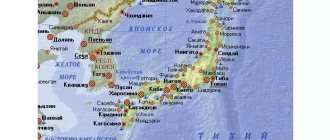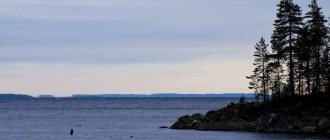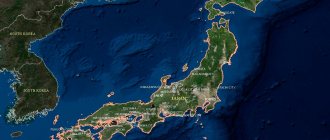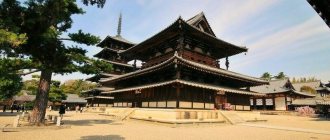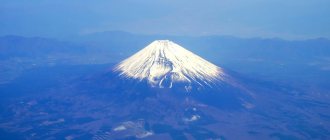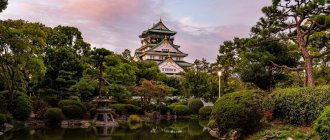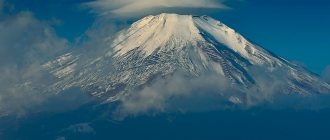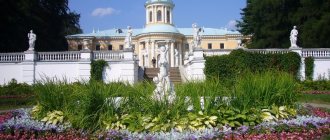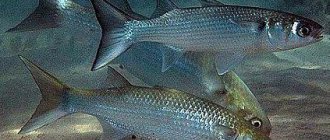The Japanese archipelago consists of hundreds of islands stretching from north to south. Such geography provides the country with climatic diversity, so there is no single concept of the Japanese climate. The climate in Japan varies significantly depending on the region. In January, when there is frost and snow in the north, sakura blooms in the southern regions, and the average temperature does not fall below 10-15 degrees Celsius.
A land of contrasts: frosts and subtropics
The climatic zones of Japan are strikingly diverse: almost all types of climate are represented here. The four main islands stretch from north to south for 3 thousand km: Hokkaido, Honshu, Kyushu, Shikoku. The northern part of Hokkaido is located in the subarctic zone, and the south of the country is already in the subtropics.
Since the country is surrounded on all sides by the ocean, the weather has its own characteristics. In winter, wet monsoons constantly blow from the Eurasian continent, bringing rain and snow to the western part of the archipelago. During this time, the eastern Pacific coast is mostly clear and dry.
Spring begins with strong winds blowing in February-March. These are the first signs of the spring season.
Climatic conditions on the largest islands - Honshu, Shikoku and Kyushu - are milder than in the north. Winters are warm, temperatures do not drop below zero, although there are heavy snowfalls. At the beginning of summer, monsoon rains begin, humidity reaches 100%.
From mid-summer to early autumn, temperatures reach +30 Celsius and above, attracting vacationers to the beaches. At the end of September the heat subsides and the number of tourists increases.
Typhoons, which appear from June to October, causing destruction and danger to people's lives, are considered a real disaster for the climate of the islands.
Geographical features
Japan is an island country located on an arc-shaped archipelago consisting of more than 6.8 thousand islands stretching along the eastern coast of Asia.
The southern tip of Japan is at the same latitude as the southern tip of Cuba or the middle of the Sahara Desert. The northern borders coincide with the latitude of Northern Italy, Southern France and Crimea. Tokyo, the capital of Japan, is located at the same latitude as the southern borders of Turkmenistan. The total area of Japan is about 378 thousand square meters. km. The largest islands of Japan are Hokkaido, Shikoku, Honshu, and Kyushu. It is the main land of the Japanese, accounting for 98% of the entire territory.
The coasts of Japan are heavily indented. There is an abundance of bays and bays, seaside terraces and lagoons, peninsulas, mountains and rocky outcrops. Mountain ranges sometimes come close to the shores. The southern islands are surrounded by coral reefs.
Finished works on a similar topic
- Course work: Climatic conditions of Japan 400 rub.
- Abstract Climatic conditions of Japan 250 rub.
- Test work Climatic conditions of Japan 230 rub.
Receive completed work or advice from a specialist on your educational project Find out the cost
Note 1
A characteristic feature of the Japanese archipelago are mountains, occupying 71% of the land. Plains and lowlands are found along the coasts, form the beds of large rivers, and border mountain systems.
The relief is dominated by medium-high and low mountains, elongated in the meridional direction. The island of Kyushu is characterized by a labyrinthine and intricate arrangement of mountain ranges. The highest mountains - the Japanese Alps - are located on the island of Honshu. Mountains with spiky peaks and sharp, jagged ridges are separated by deep river gorges and glacial formations. The highest mountain in Japan is Fuji.
Figure 1. Fuji. Author24 - online exchange of student work
Are you an expert in this subject area? We invite you to become the author of the Directory Working Conditions
A significant part of the mountain peaks are volcanoes (about 200), more than 50 of them are “living”. The most active volcanoes are Asosan, Miharayama, Asama, Sakurajima. The Japanese islands are an area of very high seismic activity. There are several thousand earthquakes in the country every year. If the epicenter of an earthquake is located under the sea or ocean floor, tsunamis can form.
Note 2
The country is characterized by an abundance of mineral and hot springs.
Plain and lowland areas are located along coasts and rivers in separate areas. They are separated by narrow sea straits and mountain ranges. The largest lowland, the Tokyo (Kanto) lowland, is located in the east of the island of Honshu. Large plains are found on the island of Hokkaido.
The lowlands are densely cut by ravines and rivers, dams and irrigation canals.
The rivers are relatively short. The longest one, Shinano, is only 367 km long. River flows cascade down like waterfalls until they reach the sea, which leads to significant changes in level.
There are two types of lakes in the country:
- shallow lagoon lakes located in coastal lowlands;
- lakes of tectonic origin, formed on the site of volcanic craters (Towada Island) or as a result of faults (Biwa Island).
Winter in Japan
The winter months are especially different from region to region. So, in Hokkaido, especially in the northern part of the island, there is a fairly severe snowy winter, and the temperature can drop to 15-20 degrees below zero.
It is quite warm in Honshu and Shikoku in December-January: +5…+7 degrees. The Ryukyu Islands and Okinawa are located in southern latitudes; a monsoon climate prevails here and the temperature rarely drops below 10-12 degrees Celsius.
The Pacific coast has a mild climate: with the onset of winter, the air temperature here drops, but it rarely drops below zero. At the same time, in Northern Japan, snow falls from the first days of December, which lies there throughout the winter; in the center of the country, precipitation is extremely rare, and in the south there is no snow at all.
When you come to Japan in winter, you can first go skiing in Sapporo, and then go to Okinawa and scuba dive.
The weather in Japan by winter months in the main cities of the country looks like this:
| December | January | February | |
| Tokyo | +8…+11 | +6…+9 | +8…+10 |
| Kyoto | +9…+11 | +5…+7 | +9…+11 |
| Osaka | +8…+10 | +5…+7 | +6…+8 |
| Nara | +5…+8 | +3…+6 | +4…+7 |
| Sapporo | -1… -2 | -2… -3 | -1… +1 |
Coniferous forests
They grow on podzolic soils and are very similar to Far Eastern forests. Spruce and fir predominate here. The vegetation of Hokkaido is slightly different. The virgin forest has been replaced by artificial plantings, which consists mainly of Hokkaido spruce and Sakhalin fir.
In the temperate climate zone, coniferous forests are replaced first by broad-leaved forests (oak, maple, hornbeam), and then by subtropical coniferous forests with amazing representatives. In the central parts of the state grow: Japanese cryptomeria, cypress, pine.
The coniferous forests of Japan are considered the northernmost habitat of monkeys in the world. In addition to them, there are fox, bear, raccoon dog, deer, hare, and weasel.
Rice. 2. Landscape in Japan
Spring in Japan
The Japanese are careful about their weather, as it often brings them a lot of problems. So, everyone is looking forward to strong winds in February-March - they are the ones, according to old beliefs, that bring spring.
In general, spring in Japan is warm and sunny. Throughout the entire territory, except for the northern regions, already in March the temperature reaches +10, and in April on the large islands the air is filled with the fragrance of flowering apricot trees and the legendary sakura. This period is called Hanami.
Thanks to the huge extent of the country from north to south, you can watch the blossoming of these amazingly beautiful trees for several months: on the islands of Okinawa and Kyushu, sakura blooms at the end of February, in Tokyo and Kyoto it begins to bloom at the end of March, and in Hokkaido - at the end April - early May.
Thus, the whole spring in Japan passes under the sign of “Time of admiring flowers.” If you're deciding when to go to Japan, it's hard to find a better time. At the end of May the air warms up to + 25…+ 30 degrees.
In spring, temperature indicators for the main cities of the country look like this.
| March | April | May | |
| Tokyo | +9…+11 | +15…+18 | +18…+21 |
| Kyoto | +10…+12 | +15…+18 | +20…+23 |
| Osaka | +9…+12 | +14…+17 | +18…+22 |
| Nara | +7…+11 | +12…+16 | +17…+22 |
| Sapporo | +1…+3 | +7…+10 | +11…+14 |
All year round weather: annual seasonal events
The year in Japan begins in spring, in April. It’s getting warmer around, cherry blossoms are blooming, schools are celebrating the beginning of the school year, and firms and enterprises are celebrating the beginning of the fiscal year. Photos of smartly dressed schoolchildren against the backdrop of sakura have long been a characteristic feature of springtime. In summer, as a rule, schools go on vacation from the end of July to the end of August. Although in Tohoku and Hokkaido, as well as in several other regions with frosty and snowy winters, summer holidays are usually shorter, but winter holidays are longer.
First graders and sakura
The distinct change of seasons has had a huge impact on Japanese culture. The Japanese have seasonality in everything: in poetry, in painting, in the tea ceremony, in the art of flower arranging, in cooking - all types of traditional arts are subject to this cyclicality. One might even say that it is difficult to imagine how traditional Japanese culture would have developed without such a unique sensitivity to the changing seasons, expressed in particular in the language with all its words and phrases to describe the characteristics of each season.
However, the traditional way of life, based on centuries-old coexistence with nature, is gradually being destroyed. Nowadays, due to urbanization, the number of green areas has sharply decreased, and everything that seemed significant in the past no longer seems so now. In the natural world, too, much is not the same as it was before - apparently, abnormal climate changes are having an effect. Sakura and plum bloom out of season, and humans cannot control their blossoming. So it turns out that often by the time of a traditional holiday or seasonal celebration, flowers that bloom ahead of time have time to wither and fly around. And with every falling petal, event organizers become more and more discouraged.
Banner photo: In January, higanzakura (Japanese cherry blossom) blooms in Okinawa, and in Hokkaido the Yotei volcano is crowned with a snow cap.
Summer in Japan
The summer period begins exactly on schedule: at the beginning of June. It is from the first month of summer that the heat begins, but the rainy season in Japan also begins in June. It rains frequently, heavily, and can last for weeks.
The Japanese don't really like their summer: these are the months when deadly typhoons strike. Humidity increases to 100%, and the heat is set at +28...+30 degrees and above.
July is characterized by a decrease in the amount of rain, humidity also decreases - up to 90%.
July and August are the best time for a beach holiday: only on the coast do the Japanese and guests of the Land of the Rising Sun escape the tropical heat and humidity. There are many holidays and excursions held in the resort towns of Japan. Going on an ocean cruise on a boat, you can watch whales.
The average temperature in summer is as follows:
| June | July | August | |
| Tokyo | +20…+25 | +26…+30 | +28…+30 |
| Kyoto | +26…+27 | +29…+31 | +30…+32 |
| Osaka | +22…+25 | +26…+29 | +27…+30 |
| Nara | +20…+24 | +25…+28 | +25…+29 |
| Sapporo | +16…+20 | +21…+25 | +23…+27 |
National economy
An economic-geographical characteristic (EGC) of any country will be incomplete without a description of the characteristics of its national economy. In terms of GDP, Japan lags only behind the United States. The reasons for the country's rapid economic growth are related to the policies adopted in the mid-1950s. Until this time, Japan was a backward agrarian state. However, after the acquisition of promising and innovative technologies began, the situation changed radically.
Industry of the state
There is no doubt that the Japanese can be proud of the industry they have created. The powerful energy complex operates on oil and gas imported from the Persian Gulf states and Indonesia. At the same time, it fully satisfies all industry needs for electricity. In terms of its production volumes, the Land of the Rising Sun confidently occupies first place and is not going to give it up in the near future.
The second place in development in the state is occupied by metallurgy. This complex also operates almost entirely on imported raw materials. A high-quality metallurgical base allows mechanical engineering to develop rapidly. First of all, we are talking about the following industries:
- shipbuilding;
- instrument making;
- automotive industry.
In terms of the number of ships produced, Japan has long been confidently occupying first place. Car manufacturers are not lagging behind shipbuilders. Almost every person knows about the level of development of the Japanese electronics industry. In recent years, some companies have been taken over by stronger ones. Thus, the AIWA trademark today belongs to the SONY corporation. However, this fact did not affect the quality of the products.
Transport and agriculture
Japan's transport system is also very well developed. The fleet of this country is the largest in terms of tonnage in the world. It is thanks to sea cargo transportation that the majority of export-import operations are carried out. The characteristics of the country's transport network have many similarities with the countries of Western Europe. At the same time, Japan confidently occupies the first position in terms of the number of passengers and cargo transported.
The territory occupied by Japan is not very suitable for agricultural activities, since the amount of arable land in the state is relatively small - no more than 13% of the total area, which is a serious disadvantage. As a result, large quantities of agricultural products have to be imported.
However, the geographical location of the state also has advantages for the agro-industrial complex: in some regions, thanks to the warm climate, it is possible to harvest 2 crops per year. The basis of agriculture in this Asian power is small-scale farming. They manage to provide about 70% of the population's needs for rice, fruits, vegetables and meat. It is profitable to purchase other types of agricultural products rather than produce them yourself. But the fishing industry in Japan can be given the highest rating. The country ranks first in the world in terms of the number of seafood caught and consumed.
After carefully studying the EGP of Japan according to the 11th grade plan, certain conclusions can be drawn. Despite the shortage of natural resources, the country in a fairly short time was able to transform from a backward power into one of the leaders of the world economy. It has enormous technological potential. However, the development of the state's economy may slow down in the near future due to demographic problems.
Autumn in Japan
The first signs of the onset of autumn can be observed in late August - early September, when the air temperature gradually begins to decrease, remaining on average at a comfortable 25 degrees in most regions of the country. And although on some days in September the temperature sometimes reaches +28...+30 degrees, in October on some days the temperature in the capital no longer exceeds +13...+15 degrees.
Humidity drops in autumn, the picture of nature withering is pleasing to the eye, while the weather is mild and warm. Chrysanthemums are blooming, maple leaves are blazing with fire. Many travelers choose autumn for their trip, when the country looks especially attractive.
Autumn temperature indicators:
| September | October | November | |
| Tokyo | +25…+28 | +20…+23 | +15…+18 |
| Kyoto | +26…+29 | +20…+23 | +16…+18 |
| Osaka | +23…+26 | +18…+21 | +13…+15 |
| Nara | +21…+25 | +16…+20 | +11…+14 |
| Sapporo | +19…+22 | +12…+15 | +6…+8 |
Economics and politics
Japan's form of government is a constitutional monarchy. The highest authority is the bicameral parliament, the State Council, consisting of the House of Representatives (lower) and the House of Councilors (upper).
It is the parliament that is:
- An exponent of the will of the people.
- Bearer of state sovereignty.
- The only legislative body with the power to make laws.
The governing body of the executive branch is the Cabinet of Ministers, headed by the Prime Minister. He is the de facto head of state. The cabinet governs the state in relation to the budget and laws approved by parliament.
The Emperor is a symbol of the country and the unity of the nation. He carries out all political actions with the consent of the Cabinet of Ministers.
Its functions mainly include:
- performing ceremonies;
- reception of foreign guests;
- publication of legislative actions of parliament;
- awarding awards, etc.
A distinctive feature of the Japanese economy is active government intervention. This made it possible to quickly recover in the 50s-60s and survive the oil crisis of the 70s. Currently, overcoming the crisis in the country's economy is seen in liberal reforms.
First of all this:
- Privatization of the public sector.
- Weakening regulation of financial markets.
- Reform of the budgetary and banking sectors.
- Easing currency regulation.
Scarce natural and mineral resources, minerals and the need to import them are compensated by a highly developed industry. This is primarily robotics, electrical engineering, mechanical engineering, machine tool and shipbuilding. In agriculture, due to the climate and geographical location, rice growing comes first. Fishing and seafood processing are also traditional industries. The country leads the world in fish exports. The fishing fleet makes up 15% of the world's.
The peculiarities of Japan's EGP are, first of all, the development of the fleet and fisheries, in geography - the absence of land borders, the mountainous and volcanic structure of the islands, and a humid climate.
International relationships
Since 1945, the Japanese government has legislated non-intervention in international military conflicts. Currently the situation has changed. Domestic policy reform has led to Japan participating in international military missions since the 2000s. The first was Iraq. In the future, the provision of a navy to combat terrorism in the Indian Ocean. Japan's presence in Africa and Latin America is now increasing.
High rates of economic growth allowed the country to firmly gain a foothold on the world stage as a creditor. This allowed the state to play a leading role in the global financial arena and become dominant in Asia.
Currently, the state's foreign policy tendencies are aimed at regulating relations with South Korea and China and continuing friendship with the United States. In relations with Russia, the stumbling block is the Kuril problem. Our president does not make concessions.
When is the best time to visit Japan?
When choosing a time to travel to Japan, it is best to look at the map where exactly you are going.
The most popular excursions in Japan are during cherry blossoms - in spring. You can come to Okinawa at the end of February to admire this spectacle, when there is still snow on the main territory of Russia.
The beginning of summer is a rainy period, unfavorable for tourism. In July–August there is less rain, but it becomes too hot and stuffy.
Those who are interested in surfing come in the summer to the resort of Kamakura, the Ryukyu Islands, and Okinawa. Coral reef lovers gather on Keramo Island.
The best time to holiday in Japan, according to many, is mid-autumn. In October, festivals of music, dance, and traditional Japanese arts are held.
One of the most spectacular festivals, the Jidai Matsuri, is held in Kyoto every year on October 22. This is a festive costume procession, a historical reconstruction of the imperial procession, attracting numerous tourists.
Japan looks very beautiful on the eve of the Christmas and New Year holidays. The north of the country is covered with snow, but the weather is quite warm.
There are three popular ski areas in Hokkaido - Niseko, Furano and Rusutsu - with developed infrastructure and slopes for skiers of all levels.
Lovers of winter swimming in thermal springs near Mount Fuji also come to Japan.
Location
The state is located between the Sea of Okhotsk and the Pacific Ocean. The area is 377 thousand square meters. km. If we talk about coordinates, Japan lies 36 degrees north of the Equator and 136 degrees east of the Greenwich meridian. The largest islands of Japan are:
- Kyushu;
- Shikoku;
- Honshu;
- Hokkaido.
Japan has no land borders with other countries. The coastline of the state stretches for 29,751 km . The border of the country, washed by the sea, is parallel to Russia, China, and the Republic of Korea.
Interesting Facts
Eastern philosophy, closely intertwined, but not dissolved with Western values, creates an unprecedented background of life, forming a completely unique mentality and way of life of the inhabitants.
Here are some interesting facts about life in this country:
- Currently, there is a trend among women in Japan for crooked teeth. After paying huge amounts of money to dentists, they end up with long and protruding fangs.
- The country is distinguished by its life expectancy; today more than 65 thousand people live here, whose age has passed 100 years.
- There are legends about the ability of Eastern people to work. In Japan, career obsession is on the rise. Young people give up family, having children, and sometimes even sex in favor of work.
- In this regard, most residents work 12 hours a day with a six-day work week.
- People here are taught to work from an early age. Children in schools clean their own classrooms.
